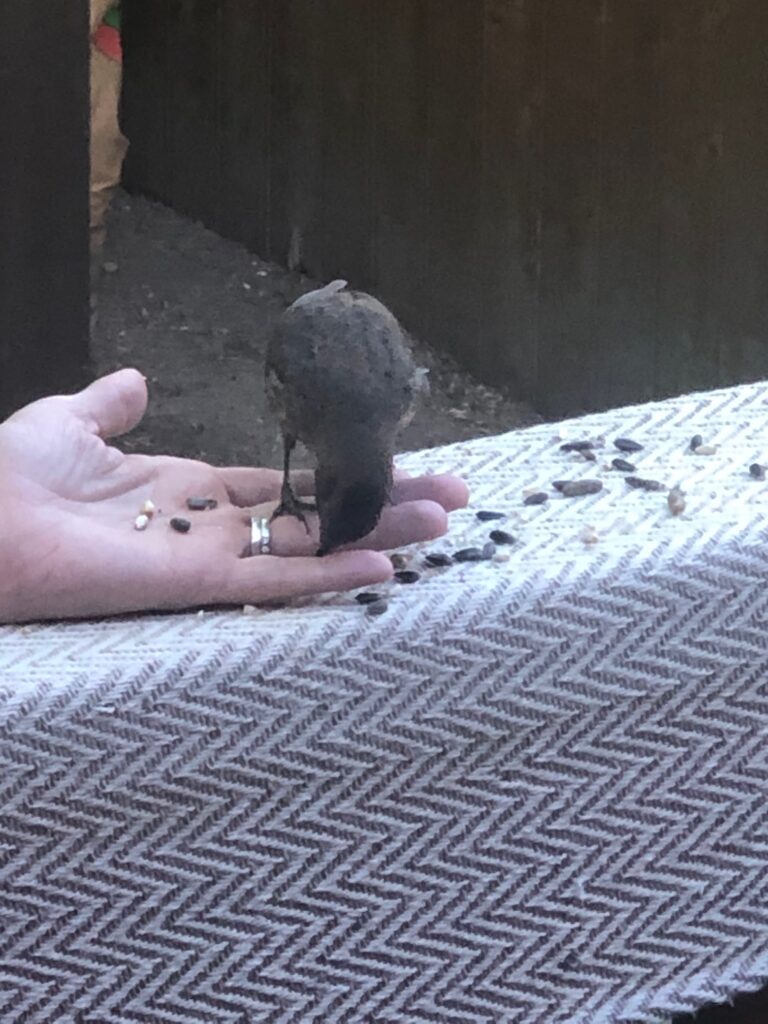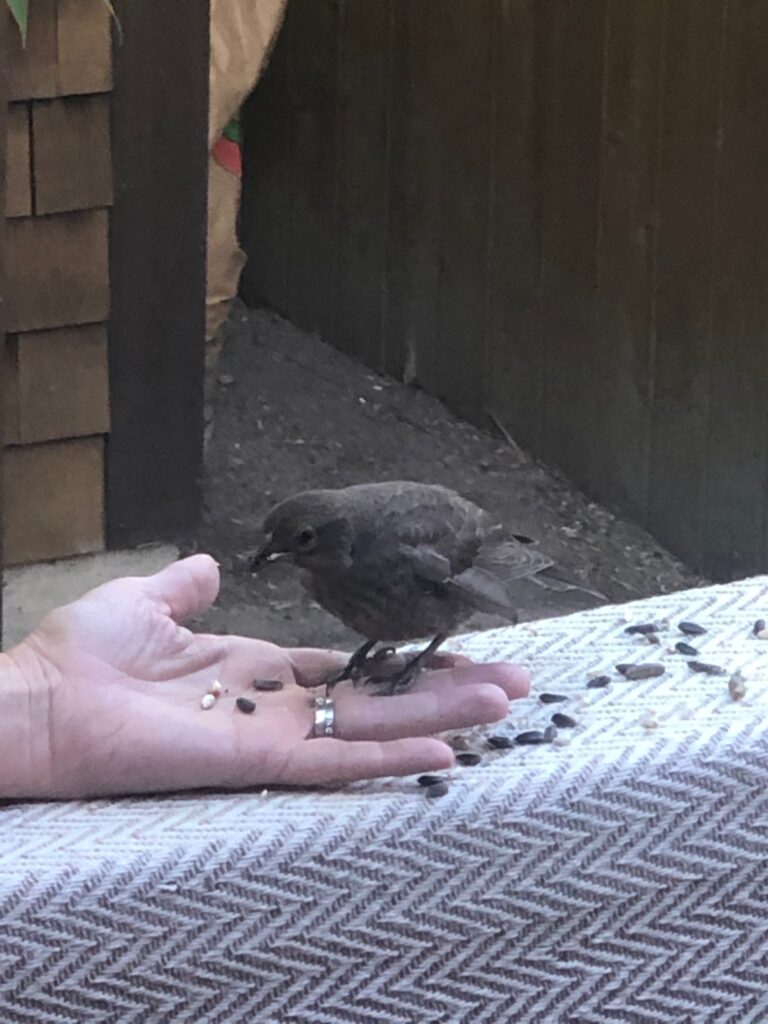Tag: urban animals
Friendly Visit From Nocturnal Neighbours
Squirrel Antics in the Morning
Sprayed by a Skunk!
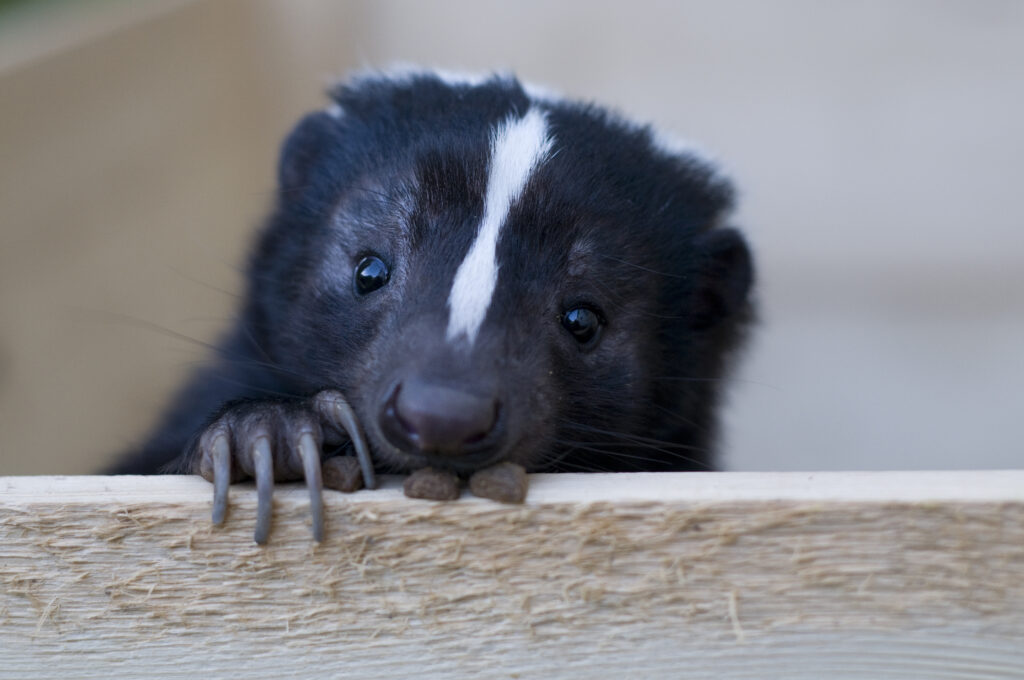
Well, it stung. And it felt like a right of passage.
Yesterday afternoon I was sprayed right in the eyes by a baby skunk.
And it wasn’t as bad as you’d think. From the way people talk about it, it seems like you can never wash the smell off and you’ll go around smelling like skunk for days or weeks.
It really stung, like any foreign substance in the eyes, and I couldn’t see for a minute or two. I wiped my eyes with a clean towel right away and felt fine within a couple of minutes. A bit like having had chlorine in the eyes from swimming. I used a proper (sanitized) eye wash in the bathroom, and then washed my face with warm water and soap.
Bathing in tomato juice is a myth (though bathing in it or anything else might reduce the smell a bit). More often it is recommended to wash with a mixture of peroxide, baking soda, and liquid soap. For me in this case, liquid soap was sufficient. It washed off the spray and the smell.
Skunks can be incredibly accurate when shooting their spray. It streams out of two glands under the tail, on each side of the anus. They can spray fairly accurately by the time they are about 3 months old. The spray is an oily substance that contains sulphur compounds, which give it both sting and smell.
As I have written about skunks before here, skunks would really rather not spray if they can help it. These adorable little ones were doing a great job stomping to scare me away, and one or two would give off just little squirts of spray. They are just learning!
Score one for the cute little guys!
Not a Painted Turtle
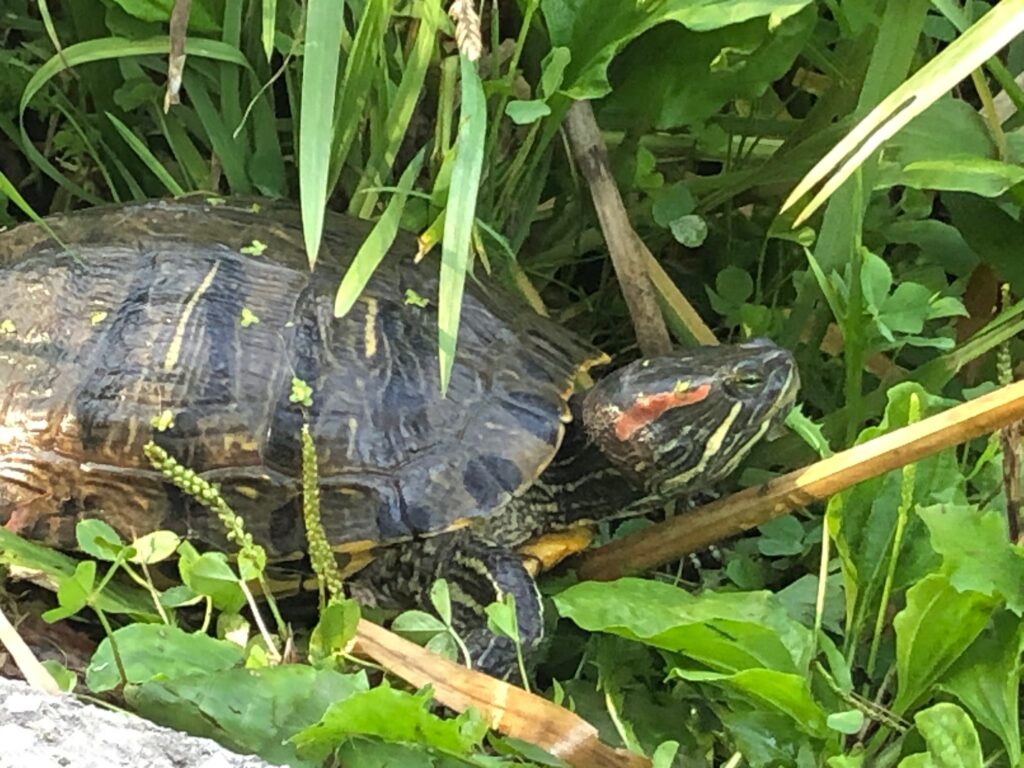
This turtle could find no peace basking in the morning sun. Unfortunately positioned between a small swamp and a main path through Taylor Creek Park, it attracted attention from people walking by.
I was delighted to see it in the grasses. At first I thought it was a Painted Turtle. Unfortunately, my delight was tempered a bit when I realized it is a Red-eared Slider.
Still a wonderful and beautiful animal. But Red-eared Sliders are an invasive species of turtle likely the result of someone irresponsibly releasing a pet into the wild. And all eight of Ontario’s native turtles are now endangered, threatened, or classified as of concern.
Southern Ontario has the most kinds of turtles anywhere in Canada. There’s the Spotted Turtle with its yellow spots and fiery red-orange-yellow patterns on its face and legs; the Blandings Turtle with its yellow neck and underbelly; the Eastern Spiny Softshell which looks a bit like a green pancake with a head and legs; the Wood Turtle with orange legs; the very small Eastern Musk Turtle (also called the Stinkpot) with mostly mud coloured body and shell with just a little bit of yellow colouring on its head, the Northern Map turtle with gorgeous yellow and greenish brown patterns on its shell and body; the powerful and larger Snapping turtle; and the beautiful Painted Turtle with red spots around the edge of its carapace (shell) and on its neck and legs. There are actually three subspecies of painted turtle in Canada, two of which live in Ontario, the Midland Painted Turtle and the Western Painted Turtle.
“The Red-eared Slider is the most common non-native species of turtle found in Ontario,” Ontario Nature says, “This species was introduced through the pet trade and is now found in every continent except Antarctica. It has a brown to black upper shell, yellow stripes on its limbs and head, and a distinctive red or orange band around the eyes. Native to the U.S., the Red-eared Slider is commonly sold in pet stores, but many people who buy one do not realize that it can reach a maximum size of 25 to 33 centimetres and live for more than 30 years in captivity.”
The Ontario Turtle Conservation Centre says that “Red-eared Sliders, and other species that are not native to Ontario, are increasingly being found in our wetlands and waterways. These animals do not belong in the wild – they are pets that have been released by people no longer able or willing to care for them. Not only is this not humane for the animal, these exotic species may compete with native turtles for food and other resources.”
Back to the beautiful turtle in the park. Even if s/he shouldn’t be there. Basking is actually really important to turtles, since they can’t regulate their body temperature and they can’t eat if they get too cold. So it was too bad that this turtle was being made uncomfortable by humans as s/he tried to bask in the morning sun.
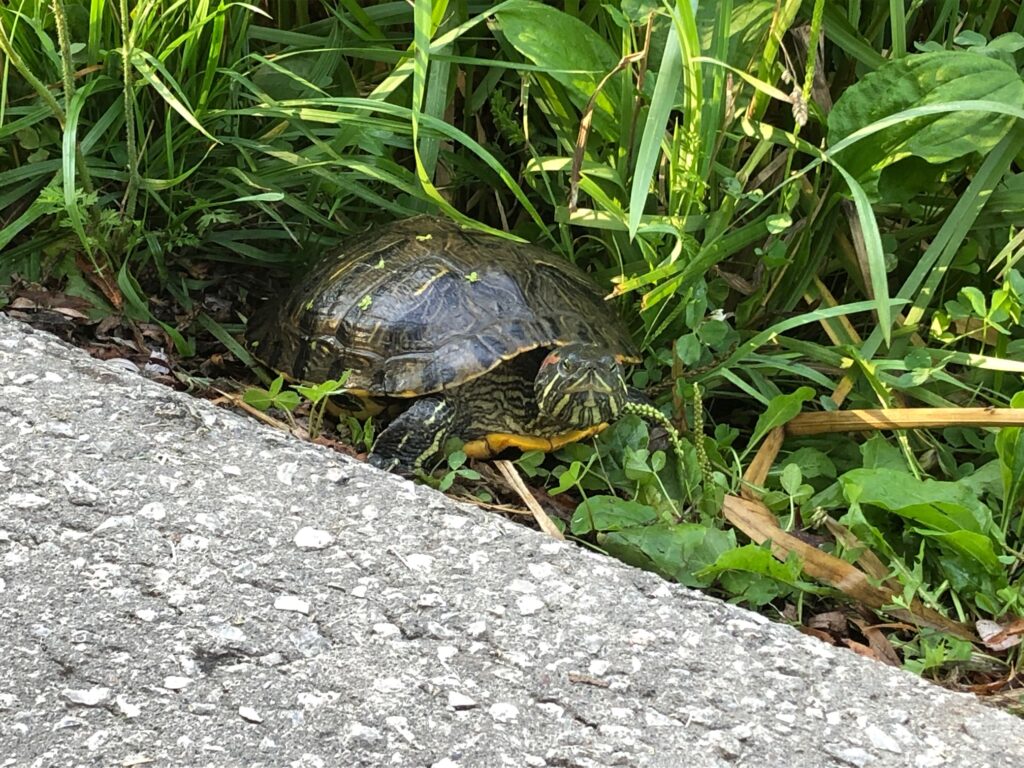
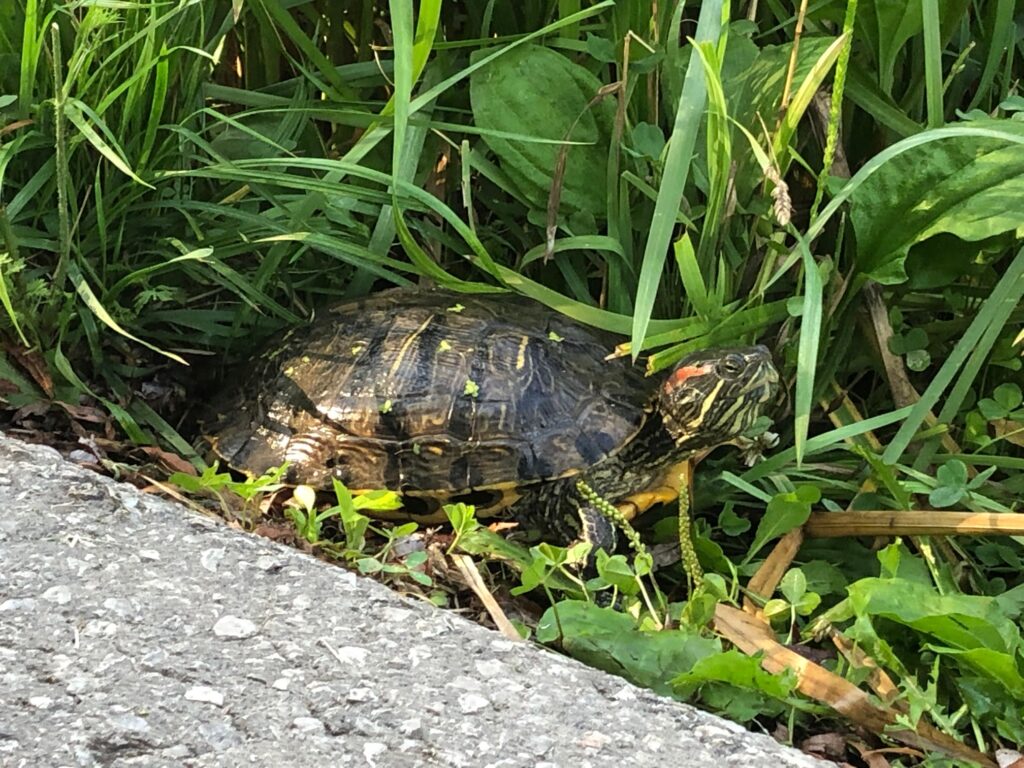
Turtles have a long history of being associated with wisdom, longevity, and the creation of the world.
Some of these stories are summarized on Wikipedia:
“According to Iroquois oral tradition, “Sky Woman fell down to the earth when it was covered with water, or more specifically, when there was a “great cloud sea”. Various animals tried to swim to the bottom of the ocean to bring back dirt to create land. Muskrat succeeded in gathering dirt, which was placed on the back of a turtle. This dirt began to multiply and also caused the turtle to grow bigger. The turtle continued to grow bigger and bigger and the dirt continued to multiply until it became a huge expanse of land. Thus, when Iroquois cultures refer to the earth, they often call it Turtle Island.”
“In Cheyenne tradition, the great creator spirit Maheo kneads some mud he takes from a coot’s beak until it expands so much that only Old Grandmother Turtle can support it on her back.
In Mohawk tradition, the trembling or shaking of the Earth is thought of as a sign that the World Turtle is stretching beneath the great weight that she carries.”
“In Hindu mythology the world is thought to rest on the backs of four elephants who stand on the shell of a turtle.”
In Chinese tradition, the turtle is sacred and symbolizes longevity, power, and tenacity. In Chinese stories, the turtle helped Pangu create the world by holding up the sky with turtle’s legs.
There are many more instances of turtles in cultures around the world. Wikipedia’s Cultural Depictions of Turtles in various countries and cultures can be read here.
The Ontario Turtle Conservation Centre can be found online here.
You can visit Ontario Nature, the conservation organization, here.
If you are interested in adopting a rescue turtle as a pet, check out Little ResQ.
A New Friend
Our first time meeting …
And later that same evening s/he got even more bold…
S/he returned again the next day…
And the next!
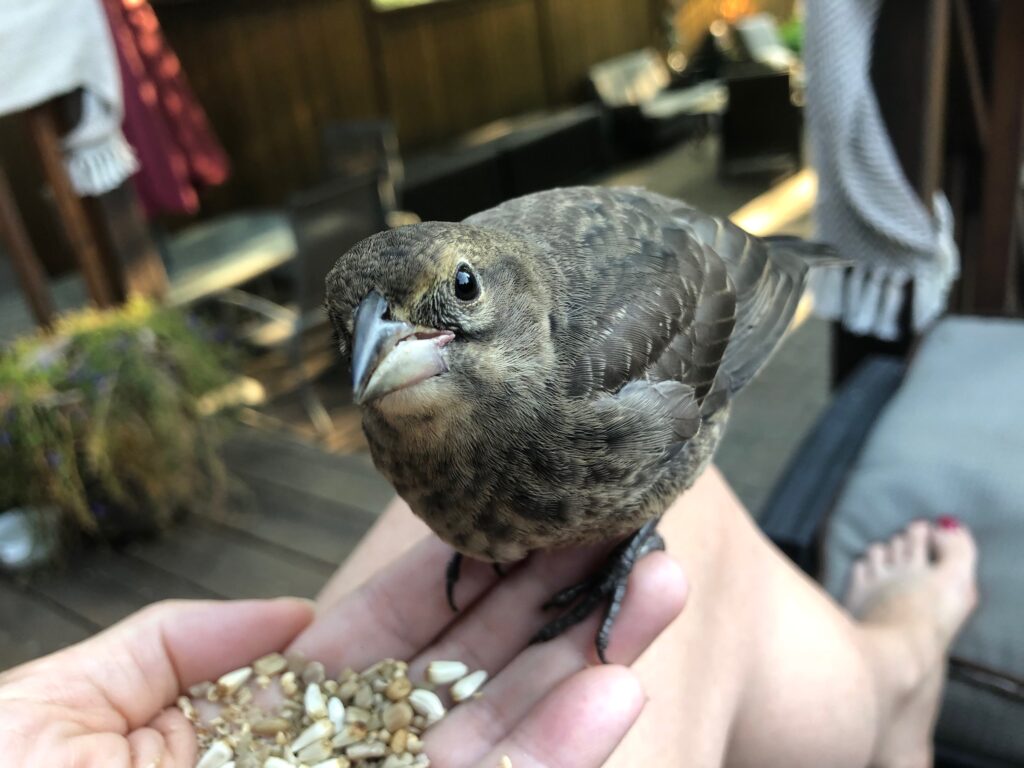
Now I look forward to our daily visits!
Squirrel Siblings
This is Baby Grey and Baby Brin. Not babies anymore!
Couple out for a morning walk together
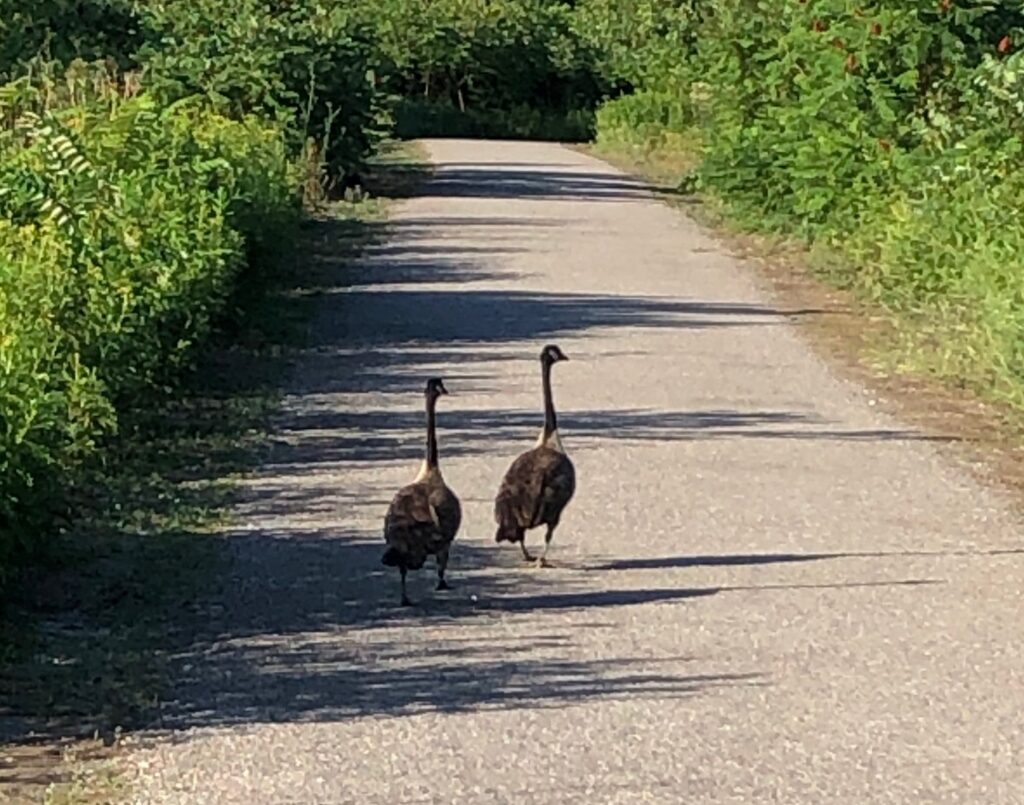
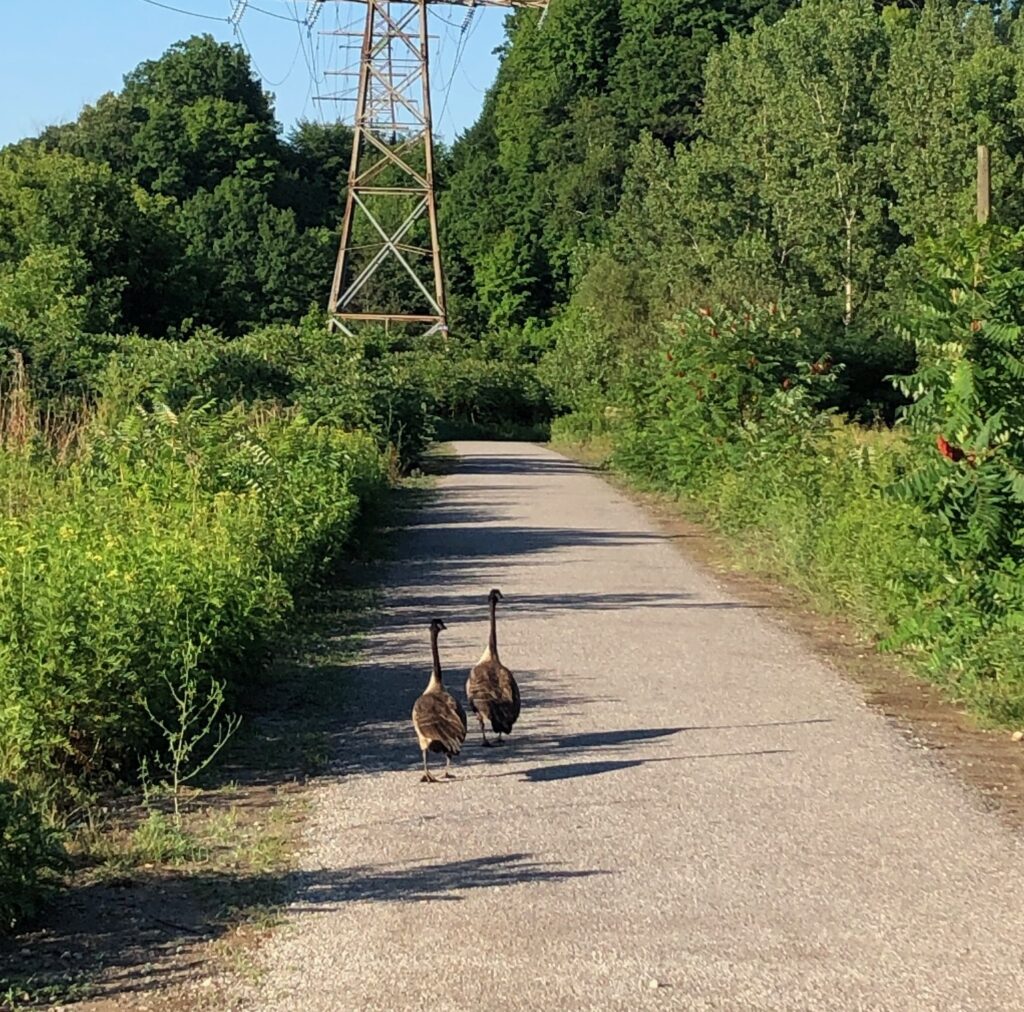
Today’s small joy: coming out of a fab hike through Crothers Woods and seeing this couple out for a morning walk together on the Sun Valley trail.
Baby Groundhogs in Toronto Park
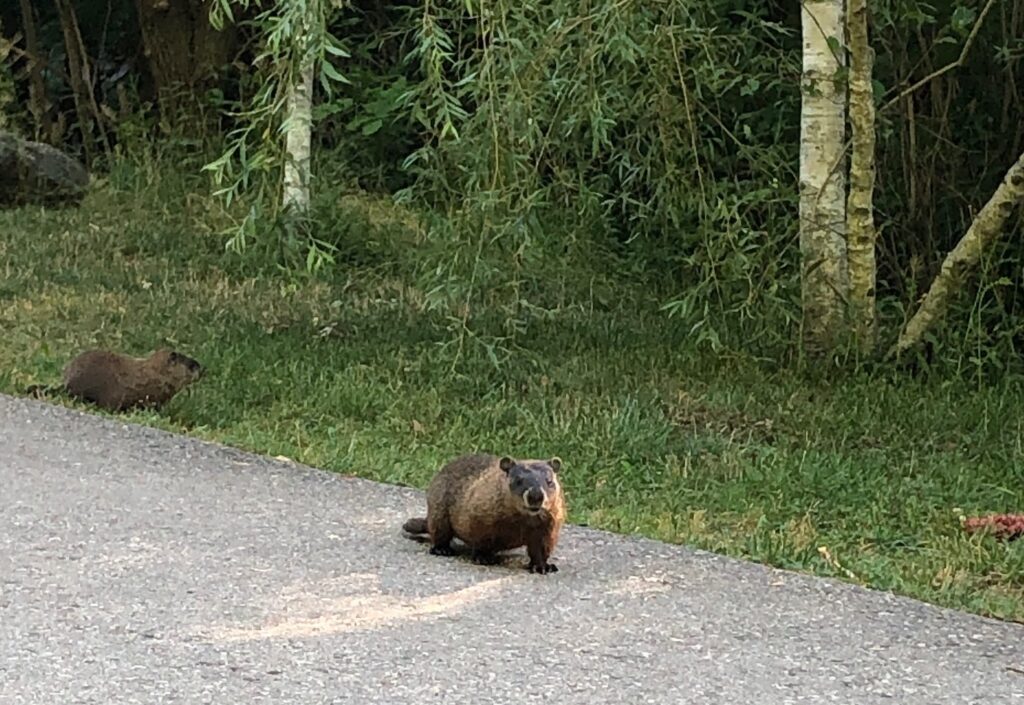
These little groundhogs were out exploring this morning when my friend Zoe and I were happily surprised to come across them on the path in Wilket Creek Park. A young mother and her toddler had stopped to watch the baby groundhogs, too, though they didn’t know what the little animals are.
These juveniles must have emerged from their underground burrow within the last couple of weeks. They were likely born in May, and then started to explore the world of this park, their home, at about 6 weeks old. So that would have been around early July.
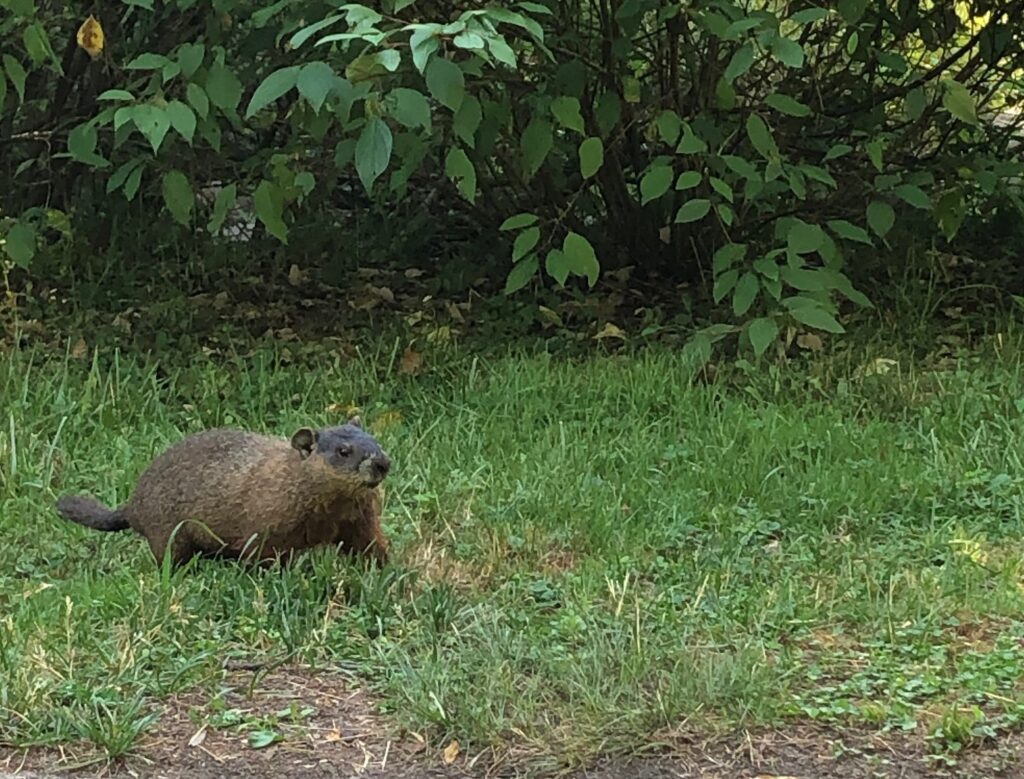
Also called woodchucks, yes, as in “how much wood would a woodchuck chuck, if a woodchuck could chuck wood…,” whistle-pigs, or land-beavers, they are part of the family of mammals that includes squirrels and chipmunks. In a segment of that family, the marmots, only beavers and porcupines are larger than groundhogs.
When not enjoying some sunshine, groundhogs are usually underground in their well-designed burrows, which are complete with bedrooms, specially designated bathrooms, spy holes, and entrance and exit.
“All sorts of animals are able to thrive because of the shelter supplied by woodchuck holes. The list includes a wide variety of fur and game animals, some of which destroy huge quantities of farm pests, such as rats, mice and insects. Skunks, raccoons, foxes, rabbits, and snakes all take shelter in woodchuck holes,” according to the Canadian Wildlife Federation.
We were lucky to see these little ones out and about in the sunshine at around 9am since, although they are daytime animals (diurnal), they are most active early mornings and early evenings.
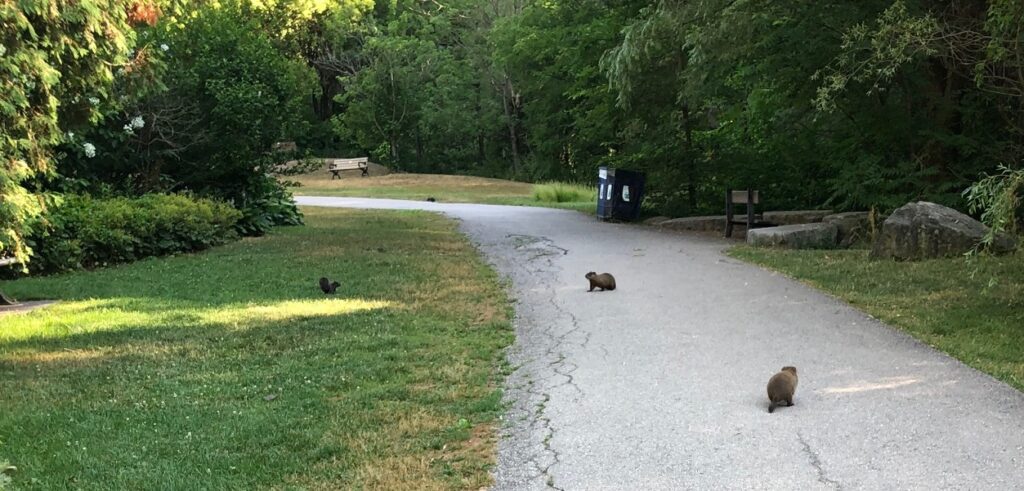
Groundhog baby and squirrel checking eachother out. Photo by Heather Kelly.
Today’s small joy: a little (mischievous) friend
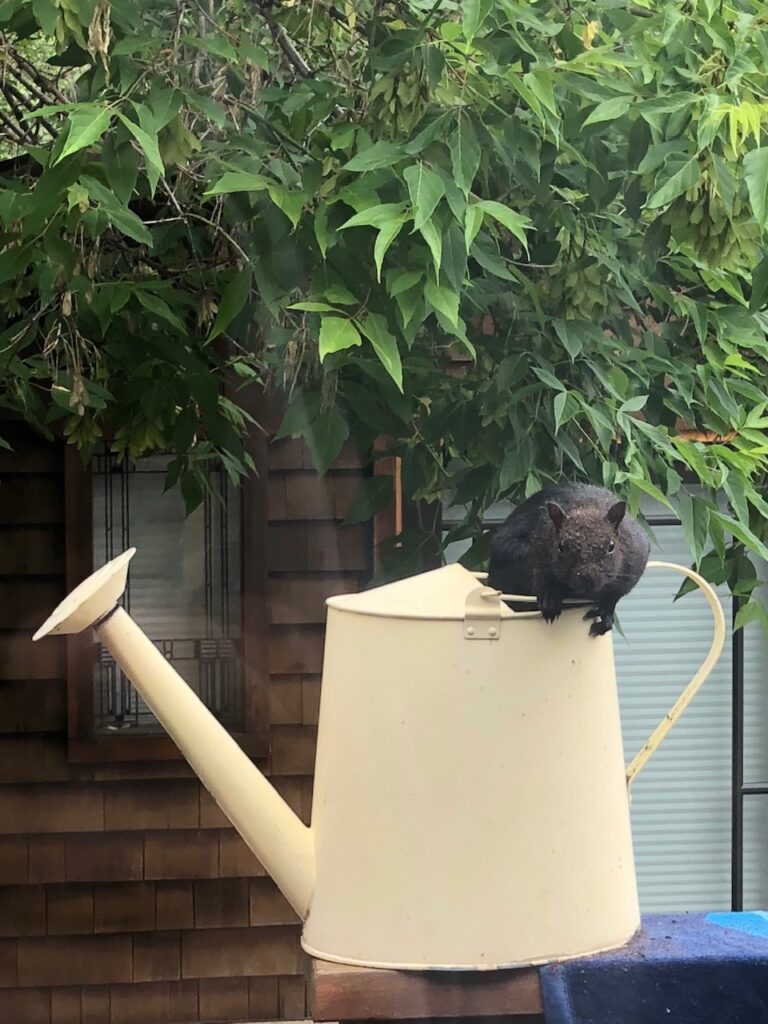
Today’s small joy: a little (mischievous) friend to greet me as I came outside for my early morning write

